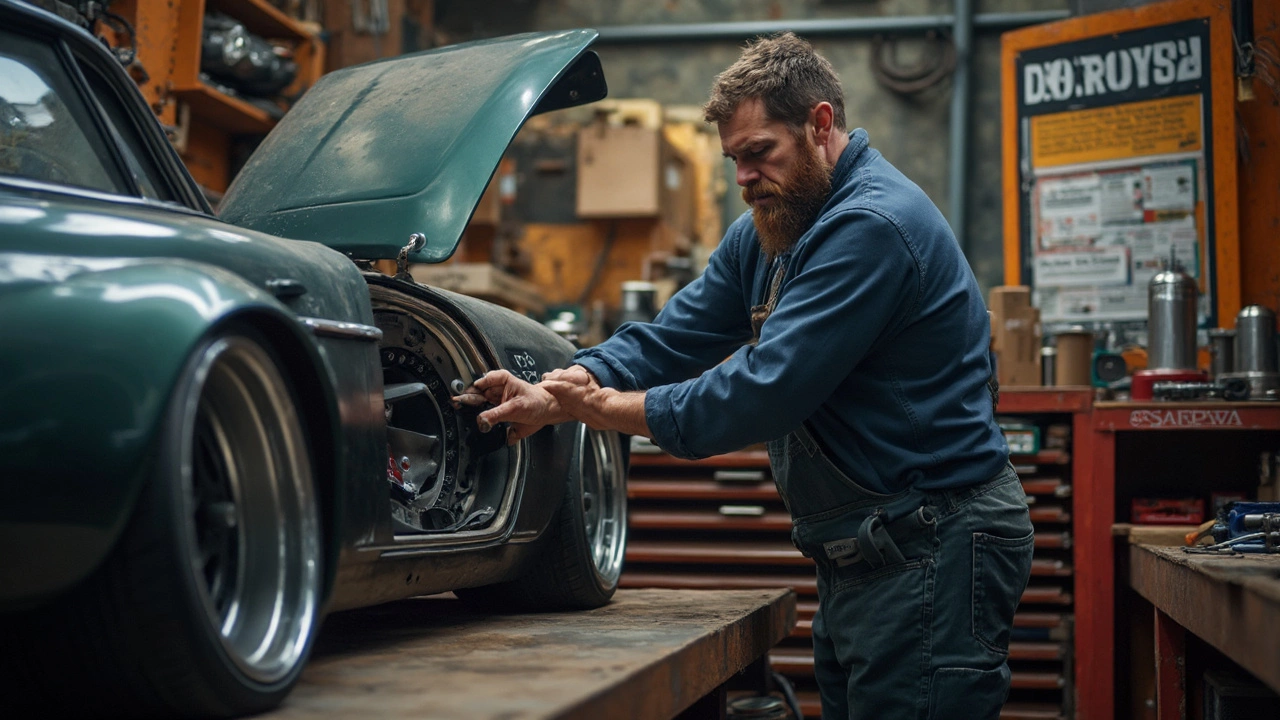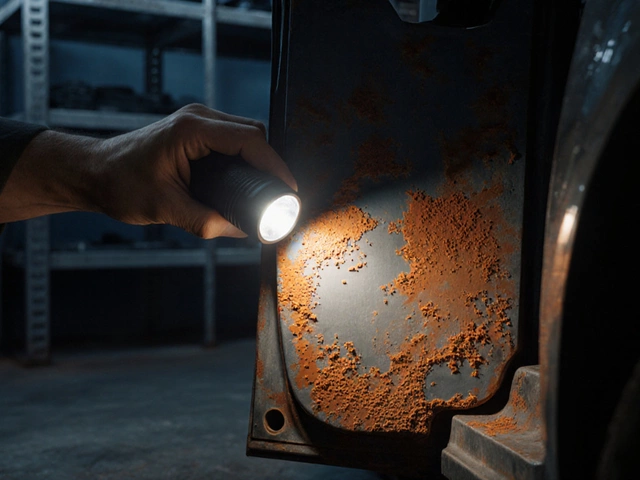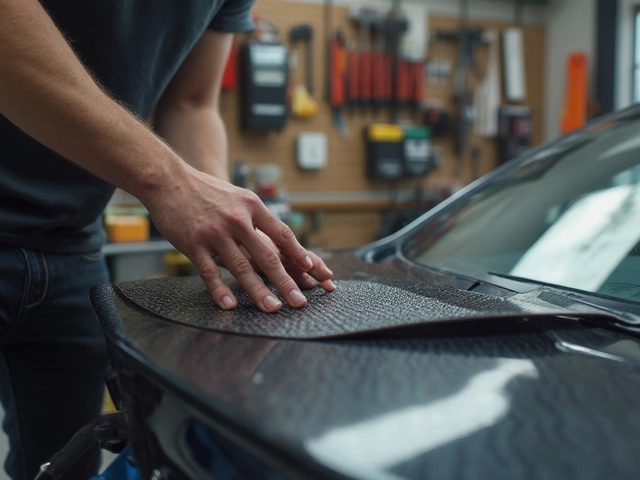Wheel spacers—they're the little unsung heroes (or rebels depending on who you ask) of vehicle modification. If you've ever wanted your car or truck to have a broader stance or accommodate larger wheels, you're probably familiar with these handy discs. But the burning question is: are they legal in the US? The short answer: it depends.
Every state has its own take on car modifications, and wheel spacers are no exception. Some states are chill about them, especially if your vehicle doesn't look like something straight out of Mad Max. Others have stricter rules that need navigating. Knowing which state lets you roll free and which might have a speed trap set for you could save you a boatload of hassle.
Before you grab that wrench and start adjusting your wheels, you’ve got to consider factors like safety and performance. Are wheel spacers going to mess with your handling? What about road safety checks? Buckle up as we steer through the ins and outs of using wheel spacers in the US. Because, really, no one wants to end up turning their dream ride into a fine magnet.
- Understanding Wheel Spacers
- Why Use Them?
- State-Specific Laws
- Safety Considerations
- How to Stay Legal
Understanding Wheel Spacers
Alright, let’s unravel what wheel spacers are all about. Imagine your car's wheels being like your favorite shoes, and wheel spacers are like those insoles that make your shoes fit better or give a snazzier look. These are basically small, usually circular, pieces of aluminum or steel, and they fit right between the wheel and the hub of the vehicle.
The core job of wheel spacers is to push your wheels outwards from the hub. Why would you need that? Well, there are a couple of reasons. For starters, it can make your car look cooler and more aggressive. Who doesn’t love a bit more road presence, right? Plus, with more space, you can fit bigger tires — perfect if you're planning to conquer some gnarly off-road trails or just want that beefier look.
But it's not just about looks. Some car enthusiasts claim that wheel spacers can help with traction and handling. By widening the wheelbase, you might notice a bit of a stability boost, especially if your car is on the higher side. It’s a cheap and easy mod, especially compared to some pricier aftermarket parts.
Now, just like everything in the world of automotive customization, there are caveats. If you go too wide with your spacers, you might put extra stress on suspension components. It’s like carrying a heavy backpack that can strain your shoulders. So, if you're going for spacers, it’s crucial to get the right size and make sure they’re installed properly. A poorly fitted or overly large spacer could spell trouble down the line.
Curious about what sizes they come in? Here’s a quick peek:
| Spacer Width (inches) | Typical Application |
|---|---|
| 1/4 | Fixing minor tire rub issues |
| 1 | Wider wheels/tires installation |
| 2 and above | Hefty stance, extreme applications |
Wrapping up, understanding your wheel spacers can make a big difference in how your ride looks and feels. Are they for everyone? Maybe not. But if customization’s your thing, they might just be what you’re looking for. Just remember, moderation is key, and always consider the long-term impact on your vehicle.
Why Use Them?
So, why are folks so keen on using wheel spacers? Well, for starters, they can really pump up your vehicle's style game. By pushing the wheels outwards, wheel spacers give your ride a wider, more aggressive stance that catches attention. It's like giving your car a mini makeover without breaking the bank.
But it's not all about looks. Wheel spacers can also help with performance. When you widen the track of your vehicle, you can improve its handling and stability. Especially when you're taking those sharp turns, the extra width can make your car feel more planted on the road. For off-road enthusiasts, spacers can allow for bigger tires, which is a game changer when tackling rough terrains.
Another perk? Spacers can solve those annoying fitment issues. Ever swapped wheels only to find they rub against the suspension or brakes? Wheel spacers create the extra clearance needed, making them a budget-friendly correction tool.
Lastly, some folks use them because they have to. Some aftermarket brake kits require extra clearance, and wheel spacers are a quick fix without having to buy new wheels. It's all about compatibility, ensuring you don't have to sacrifice your dream setup for practicality.
But remember, it's important to choose the right spacers for your vehicle. They come in various thicknesses and materials, so do your research before making a purchase. Safety always comes first, and not all spacers are created equal. Keep those factors in mind, and you'll enjoy the best of both worlds—style and performance.

State-Specific Laws
Navigating the legal landscape for wheel spacers in the US can be a mixed bag, as rules change from state to state like a radio station's playlist. It's essential to know the guidelines where you roll so that your wheel mods don't get you in hot water.
Take California, for example. Known for its strict vehicle modification rules, the Golden State doesn't explicitly ban wheel spacers, but they must comply with the broader safety regulations. This means your vehicle still needs to pass inspections and should not cause the tires to protrude excessively beyond the fender's edge.
Then there's Texas. Everything's bigger here, and that includes the allowance for mods. As long as the spacers don’t impact the vehicle's safety or structural integrity, the Lone Star State gives a bit more freedom. However, ensuring all components meet federal safety standards is key.
Florida follows its own rhythm. While there's no outright ban on wheel spacers, they could raise eyebrows during a safety check if they're not installed properly. The Sunshine State stresses that any modification should not compromise the control or stability of the vehicle.
New York, notorious for its stringent road laws, doesn't leave much wiggle room either. Rules here insist on maintaining manufacturer-specified tolerances for wheel adjustment, which means that any spacers used should comply with federal vehicle safety standards and cannot alter the existing vehicle footprint beyond what's considered safe.
It’s a bit like playing a road trip game where the rules switch at every state line. Bottom line: do your homework. Checking the most recent state-specific laws before adding those wheel spacers can save you from some hefty fines or safety citations. And let's be real, no one likes unexpected expenses, especially when they're avoidable with a bit of pre-drive research.
Safety Considerations
So you're pumped about installing wheel spacers on your vehicle, but have you thought about how they might affect safety? It’s smart to ensure your car remains a solid performer on the road, not just a head-turner.
First things first, fitting wheel spacers can change how your car handles. A wider track often means better stability on those sharp corners; however, too wide and you might experience some rubbing issues with your fenders or suspension components. It’s all about balance.
Another critical aspect is torque. When adding spacers, make sure the lug nuts are torqued to the manufacturer’s specifications. Too tight, and you risk snapping them; too loose, and the wheel could come off—definitely not what you want rolling down the highway.
Let’s talk about compatibility. Always check that your wheel spacers are made specifically for your vehicle type. Using ones that aren’t a perfect match might sound like a small compromise, but it can lead to serious issues like uneven tire wear or even brake failure.
For some eye-opening stats, consider reviewing real-world cases where improper spacer installation led to failures. Here’s a handy table summarizing a small survey by car enthusiasts:
| Issue | Percentage of Users Affected |
|---|---|
| Improper Installation | 40% |
| Rubbing Issues | 25% |
| Improved Handling | 70% |
Not so surprisingly, many folks who did their homework reported a positive impact on handling.
Lastly, maintain a regular check-up routine. Whether you DIY or head to a pro, checking bolts and alignment every few months is a small step to keep things running smoothly and legally.

How to Stay Legal
Alright, so you’re all hyped about throwing some wheel spacers on your ride. But before you jump in, let’s break down how to keep things on the right side of the law.
First up, know your state laws. There's no one-size-fits-all when it comes to the legality of wheel spacers across the US. Some states like California have stricter regulations, often focusing on the impact on vehicle safety rather than the spacers themselves. Other states may be more lenient. It's crucial to check local Department of Motor Vehicles (DMV) guidelines or consult an automotive attorney if you’re unsure.
Next, consider keeping documentation handy. If you’ve got your work done at a reputable shop, ask them to provide documentation stating everything’s been installed professionally and safely. It might seem like extra work, but it’s good ammunition in case you ever run into a curious officer or a safety inspector.
Checking for safe installation is another must-do. Even if spacers are legal in your area, poorly installed ones can be a big no-no. Here’s a simple checklist for safety:
- Make sure the spacers fit your car model.
- Use high-quality, hub-centric spacers rather than lug-centric ones for better stability.
- Re-torque the lug nuts after a bit of driving.
- Regularly inspect for any signs of wear or loosening.
Sometimes it helps to get input from a professional. Having a mechanic give the installation a thumbs up gives you peace of mind and adds an extra layer of legality in case someone questions your setup.
If you’ve done your homework and kept everything aboveboard, you’re more likely to enjoy your newly enhanced ride without any legal hiccups. Staying informed and attentive doesn't just keep you on the right side of the law; it also keeps you and others safer on the road.






